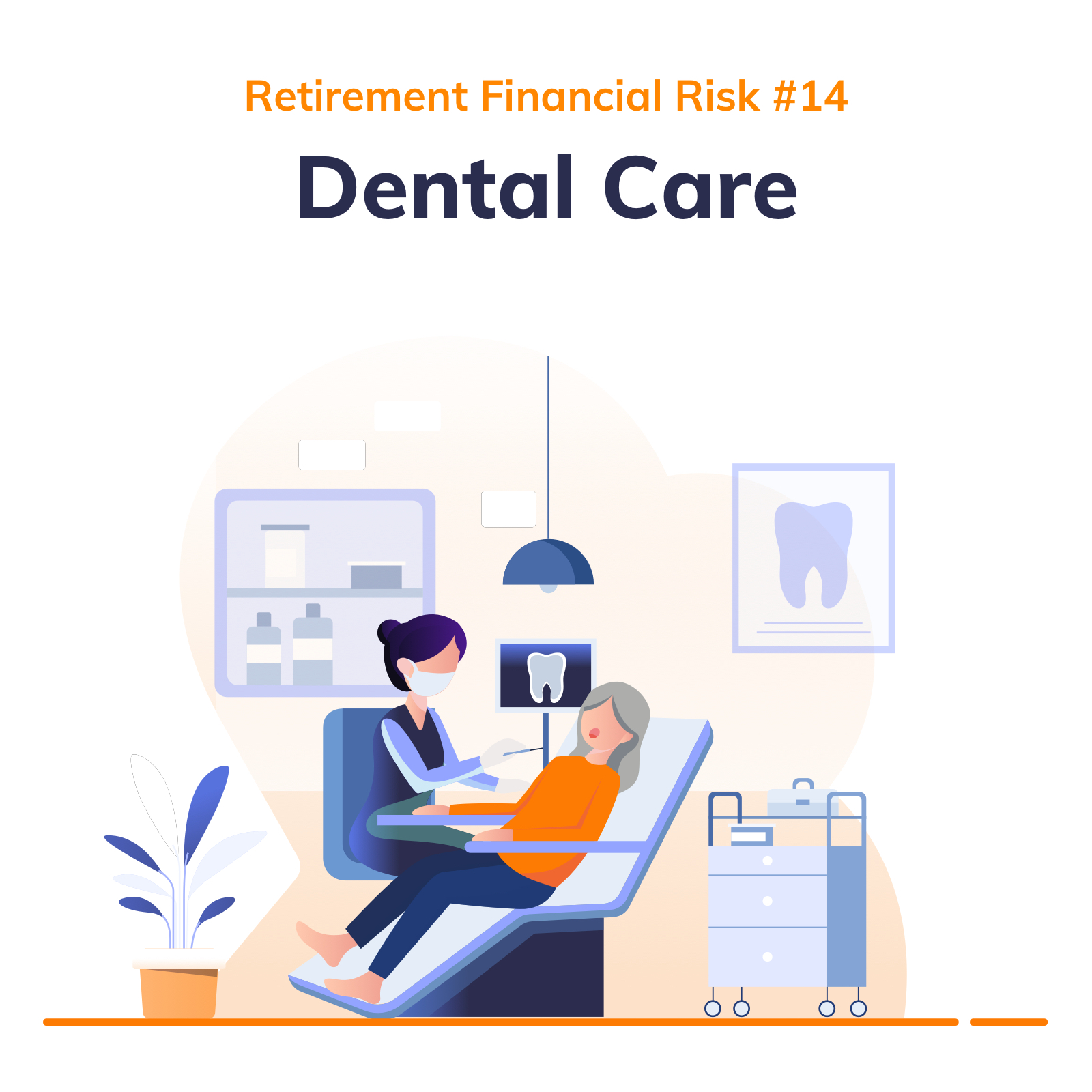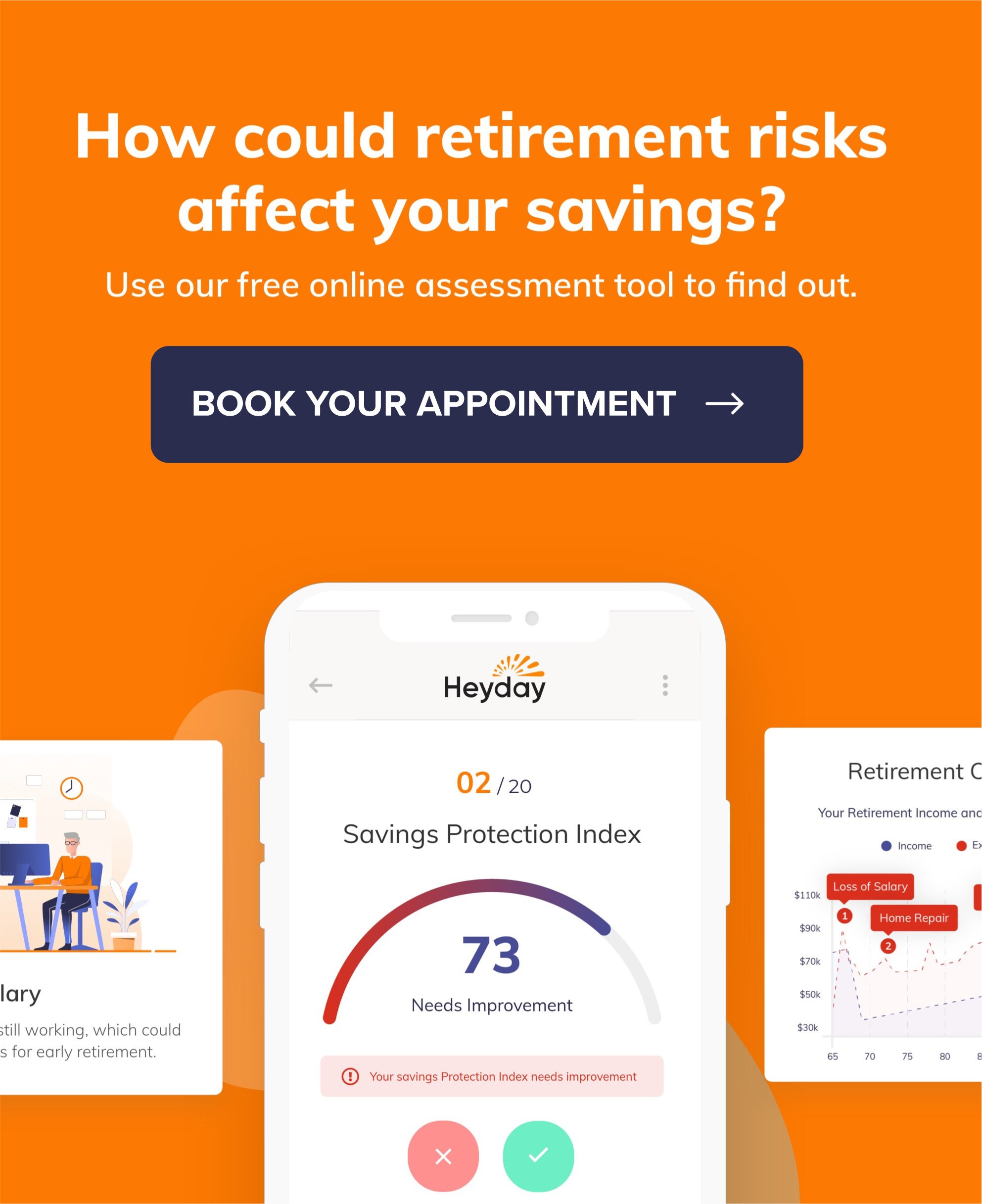Retirement Risk #14: Dental Care — Costs Could Deplete Retirees’ Nest Eggs
Surprising Costs of Aging Teeth
According to healthcare cost software provider HealthView Services, a healthy 65-year-old couple retiring in 2019 will need nearly $390,000 to cover health care costs.
But, that somewhat shocking total doesn’t include a category most of us would like to prioritize in retirement: dental care.
It’s not about vanity — dental care can be a crucial element of overall health and well-being:
- Untreated cavities and gum disease can aggravate health conditions
- Dental exams often reveal other medical issues that need attention
- Gum disease has been linked to increased risk of a heart attack or stroke
Yet, many retirees may overlook — and underestimate — the costs of crucial oral care.
“Dental care costs are rapidly increasing, and this is one of the most common unplanned expenses in retirement. This can potentially decrease your savings by tens of thousands of dollars.”
— Eric Stratton, Heyday founder
How Much Should Retirees Earmark for Dental Care?
While most of us are somewhat aware of the potential costs of health insurance, medical care and long-term care, dental care seems to fly under the radar.
Retirees can generally expect to spend an average of $900 per year on dental care, or approximately $10,000 throughout retirement. But that number could rise to 10 times that if they need catastrophic care or discover oral cancer, according to HealthView Insights.
Medicare Coverage (or Lack Thereof)
Doesn’t my Medicare include dental work?
Chances are, it does not. Original Medicare won’t cover dental services. According to research by Kaiser, nearly 65% of Medicare beneficiaries have no dental coverage at all.
However, some Medicare Advantage Plans (Part C) could provide a basic level of coverage. Retirees can opt to purchase Medicare Advantage plans that typically cover cleanings, fillings and exams — but may not pay for any bridges or complex work. Retirees should review coverage options carefully before selecting any plan.
Private Dental Insurance: A Good Start, But May Not Be Enough
Of course, additional private insurance could also be purchased for an average of $10 to $60 per month. These policies have maximums on what they will cover each year, usually between $1,000 and $2,000.
Also, dental policies typically follow a 100-80-50 model, where preventative and routine work is covered 100%, 80% for fillings and 50% for crowns and other surgical procedures. Meaning retirees could be responsible for a significant chunk of the bill should they need oral surgery or dental implants.
Here’s how much dental implants could cost:
A single dental implant can range from $1,500 - $6,000
Multiple teeth implants can range from $1,500 - $50,000
As you can see, even with insurance covering half of the charges, retirees could foot a large bill.
In a survey conducted by KRC Research, 66% of dentists agreed that oral care is too expensive for their patients.
So, how can retirees prepare for such unpredictable, yet potentially costly expenses?
Take on debt - whether it’s a credit card or a loan, debt could end up costing retirees much more than the cost of services when you factor in interest rates and reduced discretionary income while paying off balances.
Dig into their nest eggs - retirees may choose to take additional withdrawals from their retirement savings — the lump sum they planned to last for an undetermined number of years. This approach can put them at a disadvantage, as any additional withdrawals now could impact the longevity of their savings. And there could also be tax implications for additional “income” from withdrawals. Consulting with a tax professional is recommended prior to making any additional withdrawals.
For example:
Billie Jean is a 70-year-old retired widow. Her dentist told her she needs four crowns and two fillings. Her dental insurance only covers $1,000 of the estimated $7,500. How should she cover the rest?
- Take an extra withdrawal from her nest egg? In addition to reducing the longevity of her savings, she’ll incur extra taxes for the total.
- Delay treatment until she pays down her credit card so she can use it to cover the dental charges? She is already in a lot of pain, but her card is almost maxed out.
- Apply for a new card? She doesn’t feel comfortable taking on additional debt, but the pain from her teeth is even more unpleasant.
As you can see, without planning for risks like costly dental procedures, retirees may wind up with difficult decisions to make.
One step pre-retirees and retirees can take now is to see how well their savings are protected against the many financial challenges that may lie ahead. Free online tools like Heyday’s Custom Retirement Review help retirees know where they stand in only a matter of minutes. From there, they can easily speak with a professional to revise their strategy and help secure their retirement.
Ready to take your risk assessment? Start here.

Written by Cindy Collins
Forbes Contributor & Retirement Financial Professional
Cindy Collins is a Heyday Retirement contributor with over 30 years of experience in personal financial services.

About Heyday
Heyday is a premier source for comprehensive tools and informative content designed to help retirees build a secure retirement income plan.
Subscribe
Stay in the know on a wide range of retirement topics.








